What Is CBDV?
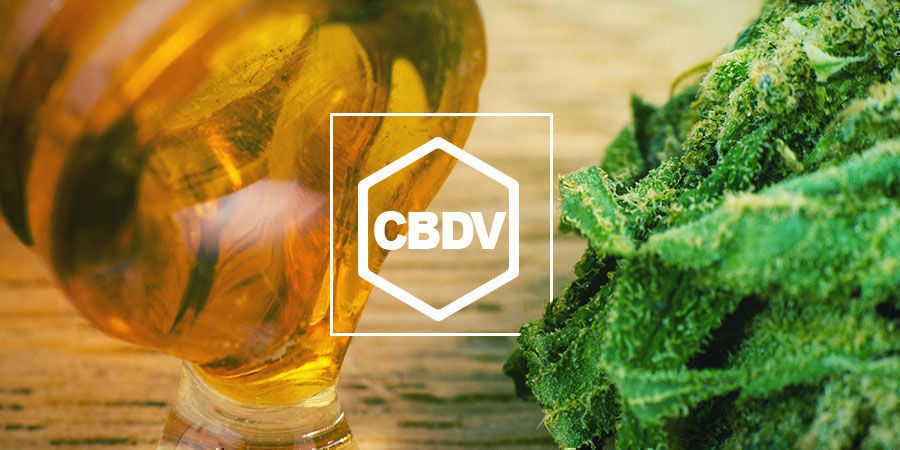
CBD, CBG, THC, THCV—the list goes on (to 120 in fact). There are many, many cannabinoids found within cannabis, though most people just know THC and CBD, if that. But here we’ll look at CBDV, one of the lesser-known cannabinoids.
There are a lot of cannabinoids to be found in cannabis, and today we are looking at CBDV. CBDV is CBD’s lesser-known precursor and may have a host of effects that could be desirable. Known to influence the endocannabinoid system and the TRP channels, the uses of CBDV are as yet unknown, but very promising.
What is CBDV?
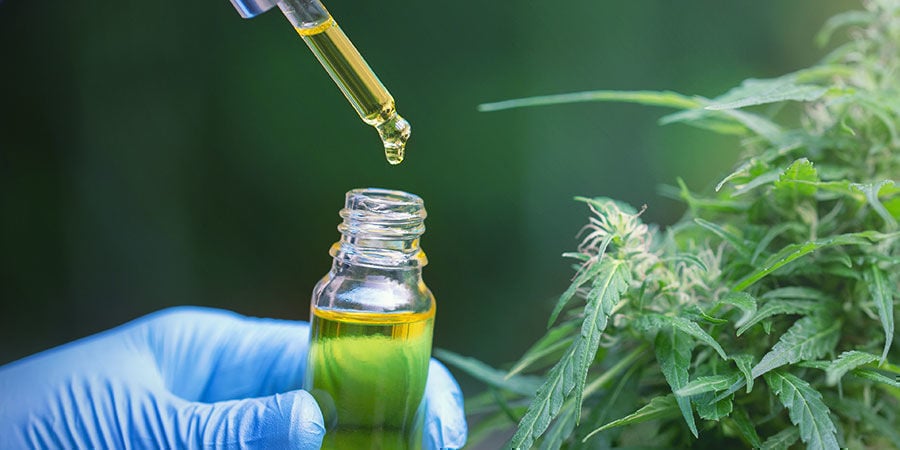
Cannabidivarin (CBDV) is one of over 120 identified cannabinoids found within cannabis. Due to the criminalisation of cannabis across the globe, despite it being discovered in 1969 by Vollner et al., research into CBDV has only recently commenced.
CBDV is similar in many ways to cannabidiol (CBD). Both have 7 double bond isomers and 30 stereoisomers. CBDV is found in its highest concentrations in cannabis plants with a high CBD and low THC content. As a result, until the recent surge in CBD-rich cannabis, CBDV has hardly been present in most cannabis. Moreover, cannabis is the only plant CBDV has been identified in at all, making it a hard compound to find. Those naturally occurring strains which have the highest concentrations of CBDV are the genetically pure indica landrace strains from Africa and Asia.
What Are The Benefits Of CBDV?
Research into the potential effects of CBDV on the body is underway. But what we do know is that CBDV, like CBD, is non-psychotropic, meaning that it doesn’t cause a high. This means that it is suitable for taking during the day, at work or social events, and in other situations when being high may not be a good idea.
Likewise, there are people for whom the effects of THC are unpleasant, but maybe they’d still like to smoke or somehow ingest a cannabis product. In that case, products high in CBDV and low in THC can provide this solution.
Does CBDV Have Any Side Effects?
As yet, there are no known side effects to CBDV. However, research exclusively into the effects and side effects of CBDV has been so limited that it’s best to assume we don’t know whether there are side effects, rather than assuming there are none.
It has very close relationship to CBD. Indeed CBDV is a precursor to CBD, and so it seems likely that both its effects and side effects will also share similarities.
What Is The Difference Between CBDV And CBD?
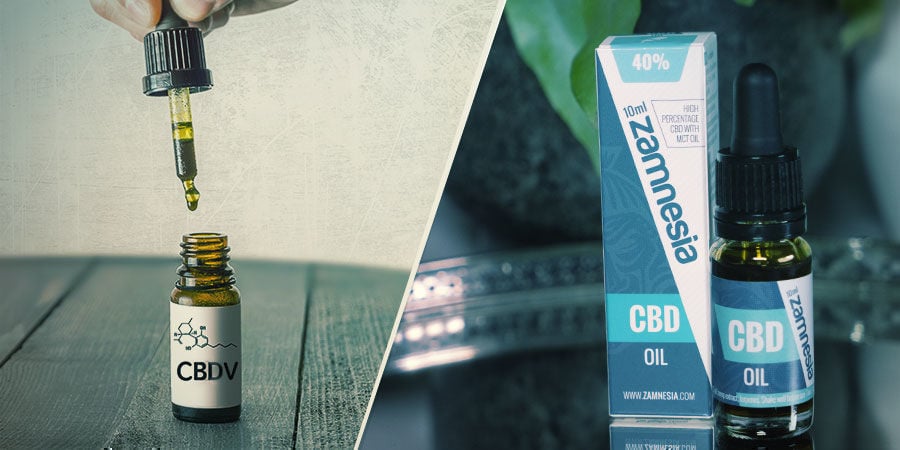
The major (structural) difference between CBD and CBDV is that CBDV’s side chain has two fewer methyl (CH₂) groups. What are the implications of this? We’re not entirely sure, although it does seem to significantly affect the ways in which CBDV interacts with the body, compared to CBD.
How does CBDV work?
Tetrahydrocannabinol (THC) mainly binds to the CB1 in the brain, and this is what causes the psychoactive effects. CBD on the other hand appears to inhibit these receptors, which is thought to be the reason it seems to counteract the effects of THC. CBD also interacts with the body’s endocannabinoid system, by mimicking the body’s own endocannabinoids. By doing so it can influence homeostasis, immune function, cognition, and a host of other bodily functions.
But CBDV appears to work in slightly different ways, offering even more potential uses from cannabis.
TRPV Channels
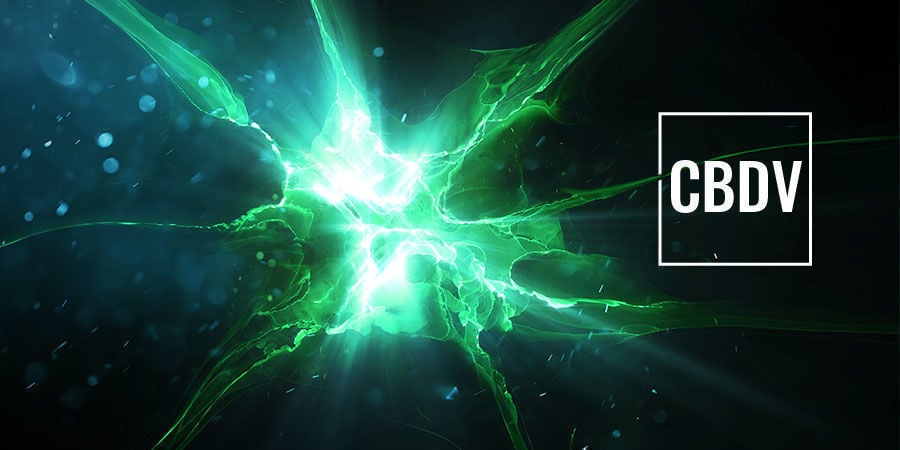
It looks as though CBDV affects "transient receptor potential cation channel subfamily V" (TRPV) channels. These are both ion channels and receptors. TRPV channels do not only have an affinity with CBD, but with many other naturally occurring and very popular plant chemicals. These receptors are known as vanilloid or capsaicin receptors. This is because, in the first instance, certain beneficial compounds found in vanilla bind readily to the TRPV receptors, and in the second instance, because the anti-inflammatory compound capsaicin (found in chillies) also binds to them.
• Where Are TRPV Receptors In The Body?
The majority of TRPV1 receptors can be found in the peripheral nervous system. These are all your nerves not located in the brain, brainstem or spinal column. They are found in such high concentrations throughout the whole body because they are essential for the perception of discomfort or soreness. Therefore they must be present in all limbs and tissues.
They are also found in smaller concentrations within the brain, but exactly what function they serve there is yet a mystery. It is assumed that they are somehow linked to neurological disorders, and unravelling the roles they may (or may not) play in these could be key to unlocking certain life-changing secrets.
• What Do TRPV Receptors Do?
TRPV1 receptors are linked to discomfort. Essentially, when they become activated, they cause discomfort. However, like all receptors, if they become activated for a prolonged period of time, they become desensitised, and so actually the experience of discomfort will be reduced. Their ability to uptake the necessary signals will become lessened.
Whilst substances that simply deactivate these receptors are considered to be dangerous, as they would seriously inhibit our ability to feel, substances that desensitise these receptors could be incredibly useful, as they could cause a huge reduction in soreness without rendering the user “numb”.
• CBDV and TRPV
Both CBD and CBDV have shown an affinity to TRP channels. By dose-dependently activating them, they are able to subsequently desensitise the TRPA1, TRPV1 and TRPV2 channels. The desensitisation of these ion channels causes what’s known as a neuronal hyperexcitability reduction.
2-AG
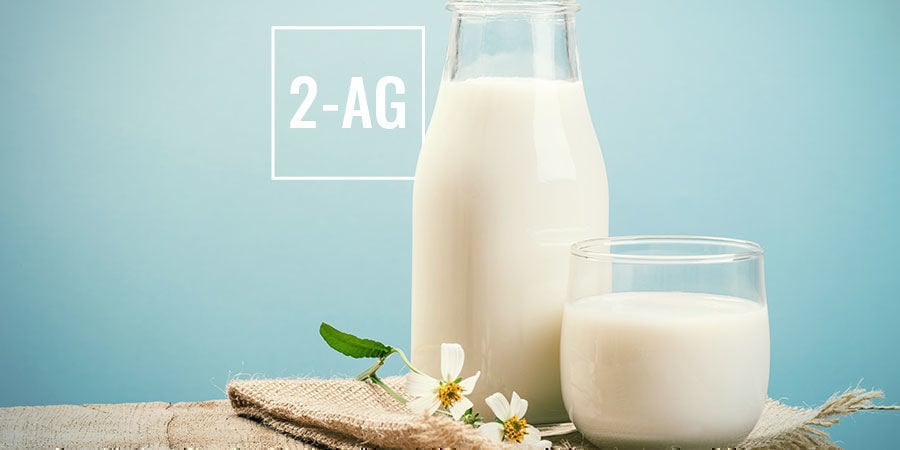
It looks as though CBDV may be able to inhibit the activity of diacylyglycerol (DAG). This is the primary enzyme involved in the synthesis of 2-AG—an endocannabinoid.
• What is 2-AG
2-AG (2-Arachidonoylglycerol) is a naturally occurring endocannabinoid. It is found in maternal bovine and human milk. It works by acting as an agonist to the CB1 receptor, and a ligand to the CB2 receptor. Essentially, this means it activates them.
• CBDV and 2-AG
By inhibiting the production of 2-AG, CBDV may be able to reduce the stimulation of the receptors CB1 and CB2. By doing so, it could have an effect on the endocannabinoid system, and thus physiological functions, such as emotion, cognition and energy balance.
Which Strains Are Rich In CBDV?
As previously stated, CBDV naturally occurs in its highest concentrations in indica landrace strains, particularly those from northwest India and Pakistan. But the market always gets there eventually, and there are now commercially available CBDV-rich strains, specifically bred to get the highest concentrations around.
These are our favourites.
Royal CBDV by Royal Queen Seeds
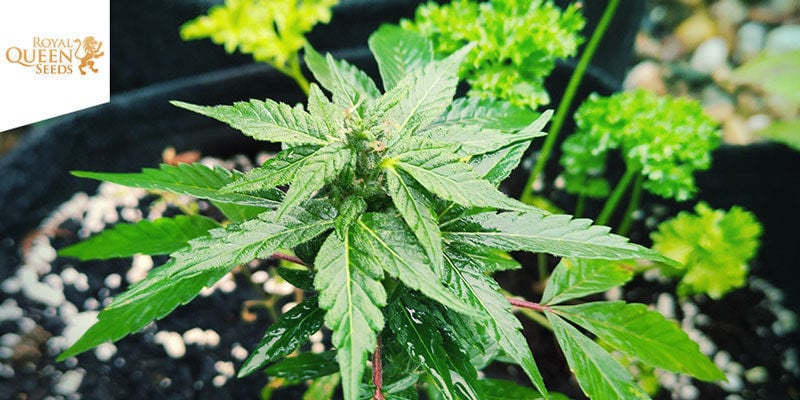
Royal CBDV Automatic is a next-generation cannabis plant. This is one of the few strains around specifically bred to have huge concentrations of CBDV coursing through it. And you don’t need to be a pro to grow it! An autoflowering strain, ready in as little as 8 weeks, it’s a breeze to cultivate and as such is suited to both novices and masters. Lacking the psychoactive effects of a THC-rich strain, Royal CBDV Automatic has a clear-headed, refreshing effect that will leave you able to carry on with your day much as before, just maybe a little better.
As CBDV is most present where there is a high concentration of CBD, it made sense to breed from a strain high in CBD. So one of the parents is Solomatic CBD, chosen for its sky-high levels of CBD. The second parent is Durban Poison, chosen for its rich Sativa genetics. And the third parent? Who knew! Ruderalis, for those awesome autoflowering genetics that make your life so much easier. The result is a 75% sativa, 20% indica, and 5% ruderalis strain setting the bar for any CBDV strains to follow.
For those with little space, fear not! Royal CBDV Automatic grows small and dense. At its tallest, it will top out at a modest 70–80cm, making it suitable for all by the very smallest of grow spaces. The speedy production doesn’t leave you wanting either. Expect up to 450g/m² of gloopy, resinous buds within 56 days.
Outdoors, you can expect a slight increase in height, but not much. It should max out at around 1m, with the yield amounting to 110–150g/plant. All this taken into account, plus the fact that it can tolerate cold and stress well, means there’s really no reason not to try growing it.
In terms of cannabinoid levels, you’ll get 5% CBDV, 5% CBD and THC levels of 0.3% or less. The terpenes produce flavours of pine and warmth, with a moreish edge keeping you coming back for more!
CBDV Auto by Kannabia
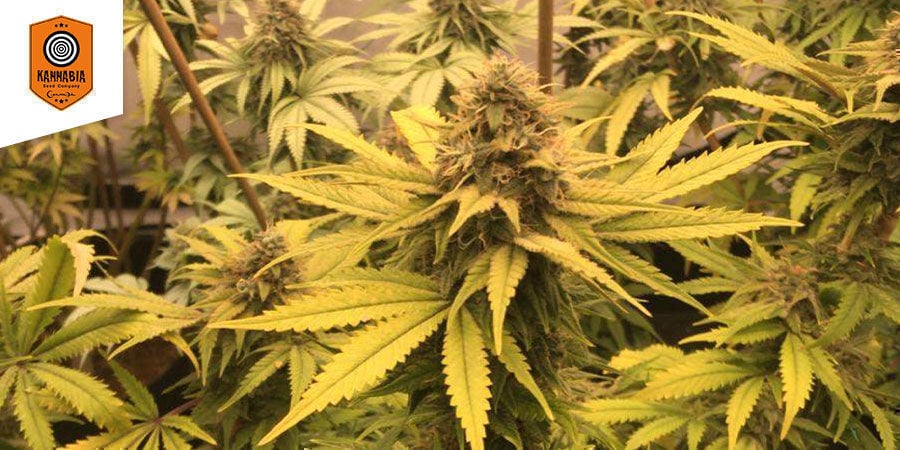
Another CBDV-rich strain, CBDV Auto brings you 5% CBDV, 4% CBD and 0.2% THC. Indoors, it can get really tiny, growing to as little as 60cm, and getting up to as much as 90cm. Outdoors, it can bolt, reaching as high as 150cm. It can get pretty bushy, so needs trimming and pruning every now and then to keep it under control. But this is only because of its vigorous desire to grow!
Other than this, it’s an incredibly easy and rewarding plant to grow. Resilient and robust, it will need minimal care to keep it healthy and to ensure great results. Expect satisfying heaps of bud by harvest time, due around 63–70 days from germination.
Regarding the flavours, expect warmth and comfort. Earthy aromas and flavours will demand nothing of you, whilst being very enjoyable at any time of day, in any situation.
CBDV: Worth The Fuss?
Yes, probably. As you can probably tell, research into CBDV is still in its infancy, so what we can say about it is limited. However, we can be fairly comfortable thinking that it doesn’t seem to have any unusually adverse effects, and so, why not give it a go and see if it works for you? Especially if you’re somebody who’s found that CBD is of benefit, you may find CBDV to your liking as well.












 United States
United States








